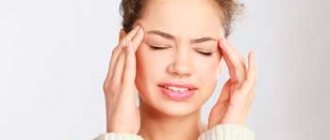The specificity of eliminating such a symptom is that you need to get rid not of tinnitus, but of the factor that caused it. It follows that treatment will be individual in nature:
- if there is wax plug, rinsing the ears will be sufficient;
- in cases of overwork or stress, you will need to take general strengthening substances and antidepressants;
- if the source is cerebral vascular pathology or hypertension, then comprehensive elimination of cardiovascular diseases, taking medications to lower blood pressure and improve cerebral circulation are necessary;
- inflammatory pathologies of the hearing aid require the use of antibacterial agents or the use of local therapy. If such ailments are severe, surgical intervention is necessary;
- in case of otosclerosis, an operation aimed at prosthetics of the auditory ossicle is indicated;
- In cases of damage to the auditory nerve, the only treatment method is the use of a hearing aid.
Good results can be achieved using the following physiotherapeutic procedures:
- electrophonophoresis;
- magnetic therapy;
- laser therapy.
Sometimes you can use alternative medicine methods. To prepare medicinal decoctions and infusions use:
- currant and strawberry leaves;
- elder flowers;
- lilac and clover;
- rowan and lemon balm;
- Dill seeds;
- horseradish root.
To obtain drops that need to be instilled into the ears, use:
- Bay leaf;
- beet juice;
- baked onion;
- garlic;
- raw potatoes;
- propolis.
In addition, good results can be achieved by performing simple exercises:
- breathing exercise - you need to close your nostrils with your fingers and try to inhale air through the nasal cavity until a characteristic “pop” appears in the ears. If after three repetitions such an exercise does not produce results, then it is best to abandon it;
- Tapping on the skull is a simple but effective method. You need to lightly tap your head with your fingers. If after forty clicks the noise does not disappear, then the exercise should be stopped;
- squeezing the ears with your palms - to do this, you just need to cover both ears with your palms, press so that a feeling of vacuum arises and suddenly release;
- intensive rubbing of the point, which is located two centimeters from the earlobe towards the cheekbone;
- insert your fingers tightly into your ears, then suddenly and simultaneously remove them;
- Rub the edge of the ear with your thumb and index finger for a minute. You need to move from the top point to the lobe and back.
Causes, diagnosis and treatment of buzzing in the ears
Tinnitus and buzzing are a subjective sensation of sound, while there are no external sound stimuli. Such sensations in themselves are not pathology, but they indicate the presence of a disease. To find out the reason why a person hears a hum, you will need an integrated approach, which includes not only an examination, but also an instrumental examination.
Humming in the ear - provocateurs
A constant buzzing in the ears can be caused by completely different reasons: from frequent use of headphones while listening to music to hypertensive crises. High blood pressure leads to narrowing of the blood vessels passing through the ear canals, which is why we begin to hear noises in our heads.
In this case, the patient will be diagnosed with vegetative-vascular dystonia. The hum and noise that a person hears are the ear sounds of blood moving through the body, as well as his own heartbeat.
Sometimes humming and other noises are triggered by nervous tension, defects in the spinal discs, or increased cholesterol in the blood.
If there is an obsessive and prolonged hum, the patient may suspect an allergic reaction, skull injury, ear infection, or a reaction to pressure surges.
In addition, if any unusual sounds suddenly appear in the ears, one should not exclude such serious conditions as inflammation of the brain, kidney failure or malignant neoplasms.
Among the most common reasons for determining why a person hears a hum are:
- Pathologies of the hearing organ. Correct and coordinated work of all components of the auditory organ is the key to good audibility and adequate perception of the outside world by a person. The smallest malfunctions in any part of the ear lead to distortion of sounds coming from outside, as well as to the appearance of phantom noise in the ear.
- Excessive load on the auditory organ. This includes regularly listening to music at higher decibels while wearing headphones. After some time, a person begins to notice that there is noise in the head even in absolute silence in the room. By the way, even frequent conversations on a mobile phone can affect the quality of hearing.
- Natural changes in the structure of the auditory system. Extraneous sounds in the ears are very easy to explain in old people. The fact is that with age, pathological processes begin in the nerve fibers passing through the ear. It is humming and noise that are the first signs of inevitable age-related changes in the ear.
- Critically increased pressure in the arteries. The sensation of noise and buzzing in the ears with hypertension is usually accompanied by severe throbbing pain in the back of the head and destruction of internal organs. The patient's condition worsens significantly after heavy physical labor. Hypertension is not a harmless disease that rarely occurs alone. Often, increased pressure is a sign of diabetes, kidney and retinal pathologies.
- Ear plug. Another reason that serves as a good help for the occurrence of phantom sounds in the ears is the accumulation of wax in the ear. This problem can be solved quite simply - you just need to contact an otolaryngologist who will quickly remove the wax plug.
Attention! You should not try to remove the cork at home using cosmetic sticks or other foreign objects. This is not recommended due to the risk of damaging the eardrum or the walls of the ear canal.
Treatment at home
A wide variety of medicinal herbs are used to prepare infusions and decoctions at home, for example:
- elder flowers;
- currant and strawberry leaves;
- Melissa;
- Dill seeds;
- Rowan;
- clover;
- horseradish root;
- lilac.
But traditional medicine does not end with the oral use of decoctions and herbs. To treat ear problems, drops are often used directly inside the ear. For this purpose, the following ingredients are used:
After instilling the drops, you need to insert cotton swabs and then tie your ears with a scarf.
Treatment with folk remedies will be harmless even for a child, but only after consultation with a doctor, since allergic reactions to herbs often appear in childhood.
To prevent a buzzing in the ear, they often use compresses, to prepare which you will need to do the following:
- Take one spoon of ammonia and pour it into a glass of water.
- After this, dip a gauze cloth there.
- Apply the gauze to your forehead for about forty minutes.
This procedure is allowed to be performed only once a day. According to adherents of traditional medicine, five compresses will be enough to eliminate unpleasant symptoms.
To prevent noise in the ear, there is another common treatment recipe using a compress. To prepare it you will need some viburnum berries, which are mashed and a few drops of honey are added to them. Before going to bed, you need to wrap the resulting mass in gauze, put it in the ear cavity and leave it until the morning. Treatment according to this prescription is carried out for two weeks, after which the unpleasant symptoms should completely subside.
Etiology
There are many circumstances that can cause the appearance of such an unpleasant sign, and not all of them are associated with pathological processes occurring in the hearing aid.
Among the damage to the outer ear it is worth highlighting:
- otitis externa;
- the entry of a foreign object into this organ is the most common source of such manifestations in children;
- accumulation of large amounts of earwax, which leads to the formation of a cerumen plug. This occurs due to irregular hygiene.
Diseases of the middle ear that cause the expression of such a symptom:
- otitis with the release of serous or purulent fluid;
- a wide range of eardrum injuries;
- Otosclerosis is a disease that is characterized by pathological growth of bone in this area.
Diseases of the inner ear include:
- Meniere's syndrome - in this case there is an increase in the volume of fluid in this cavity;
- swelling of the auditory nerve tissue;
- malignant or benign neoplasms of the auditory nerve;
- presbycusis is a condition characterized by age-related changes in auditory cells;
- the appearance of an inflammatory process is often a consequence of otitis media.
Predisposing factors for the manifestation of such a disorder, which are not associated with diseases of the hearing aid, are:
In addition, there are additional causes of buzzing in the ears and head that are not related to illnesses, including:
- prolonged exposure to stressful situations;
- severe physical fatigue;
- water getting into the ear;
- unfavorable working conditions in which a person is forced to constantly come into contact with chemicals and poisons. It is because of this that males are more susceptible to the appearance of such an unpleasant symptom;
- fluctuations in barometric pressure;
- prolonged exposure to loud noise;
- weak vestibular apparatus.
This manifestation can also be caused by uncontrolled use of medications, including:
- medicines for the treatment of cardiovascular pathologies;
- antibacterial substances;
- loop diuretics;
- non-steroidal anti-inflammatory drugs.
Causes
The causes of humming in the ears and head can be various factors, and not all of them are associated with pathology inside the hearing aid.
Damage to the outer ear includes the following conditions:
- otitis externa;
- accumulation of a significant amount of earwax, which leads to the formation of a plug;
- foreign object entering the ear.
The middle ear can be affected by the following pathologies:
- otitis media, accompanied by the discharge of purulent and serous fluid from the ear;
- otosclerosis, which is bone growth in a given area;
- eardrum injuries.
As for pathologies of the inner ear, these include the following conditions:
- increased amount of fluid in the ear cavity (Meniere's syndrome);
- hyperacusis;
- presbycusis;
- swelling of the auditory nerve;
- the presence of a tumor in the auditory nerve;
- inflammatory process.
The causes of constant tinnitus are not always associated with pathologies of the hearing organs; often the following diseases are provocateurs of this condition:
- vascular atherosclerosis;
- malignant neoplasms in the nasopharynx;
- arterial hypertension;
- cold;
- spondylosis;
- narrowing of the carotid arteries;
- mumps;
- chondrosis;
- ARVI;
- eclampsia;
- aneurysm;
- bleeding in the gastrointestinal tract;
- arachnoiditis;
- osteochondrosis of the cervical spine;
- viral hepatitis;
- ischemia;
- anemia;
- head injuries.
But the cause of noise and buzzing in the ears is not always a disease; often this condition can be provoked by the following reasons:
- stress;
- hit;
- changes in barometric pressure;
- entry and stagnation of water in the ear;
- problems with the vestibular system;
- overwork;
- pregnancy;
- special working conditions when a person, due to his job responsibilities, is constantly in contact with poisons and chemicals;
- prolonged exposure to excessively loud sounds.
In addition to the above, buzzing in the ear can be caused by taking certain medications, for example:
- non-steroidal anti-inflammatory drugs;
- medicines prescribed for cardiovascular diseases;
- antibacterial medications;
- some diuretics.
It is not always possible to independently determine the cause of a pulsating hum and tinnitus, therefore it is not advisable to diagnose yourself. An examination by a doctor is required, which is combined with additional studies.
How dangerous is the occurrence of buzzing in the ears, why does it appear and how to treat it?
Tinnitus is a situation in which various sounds are heard (ringing, whistling, buzzing) in the clear absence of secondary sounds. In the scientific literature it is called tinnitus.
These sounds can occur in one ear, in both ears, or even in the entire head. The ringing in the ears itself is not some kind of disease, but it indicates disorders in the body.
More than 30% of people experience this discomfort, and for some it manifests itself in a significantly adverse impact on the features of their lives.
In order to find out the factors causing tinnitus, you should undergo an examination by an otolaryngologist.
In my head - like in an old radio
Quite often, the cause of tinnitus is a completely different disease, which, although it does not directly affect the organ of hearing, indirectly affects it:
- Spasm of blood vessels in the head, persistent arterial hypertension or a significant increase in blood pressure for other reasons is almost always accompanied by dizziness, flashing spots and the appearance of multi-colored geometric shapes before the eyes, squeezing pain in the chest and... a roaring in the ears.
- The causes of noise in the ears and head can be hidden behind the incompetence of the vascular walls due to atherosclerosis of the cerebral arteries, because under such circumstances the brain suffers, not receiving oxygen and nutrients in sufficient quantities.
- There is often noise and ringing in the ears when using ototoxic antibiotics (gentamicin, streptomycin) and certain diuretic drugs, which significantly help lower blood pressure.
- The appearance of tinnitus and its combination with dizziness, gait disturbance, and numbness of the limbs in young people gives some reason to assume the development of a rather serious pathological process called multiple sclerosis .
- Signs such as noise in the left ear (or right, depending on the location of the tumor) allow one to suspect a neuroma (tumor of the auditory nerve) In addition, neuroma is characterized by other clinical manifestations: dizziness, hearing loss, impaired coordination of movements, the feeling of insects crawling on the face. Symptoms of a tumor appear when it begins to compress surrounding tissues, that is, the tumor is able to “be silent” for a long time.
- The gradual development of hearing loss with tinnitus often indicates the development of a chronic progressive pathology called otosclerosis. As a rule, the process debuts on one side, but over time spreads to the other.
- Noise in the ears and head, nausea, sometimes vomiting, and dizziness are considered the main symptoms of Meniere's disease.
- When there is noise and pulsation in the ear, there is reason to assume a serious pathology. If the patient begins to hear his heart in the full sense of the word (the pulse in the ear beats in unison with his heart), one can suspect an arteriovenous malformation or a neoplasm that originated within the cranium
(glioma, meningioma) and compresses the surrounding tissues (hearing organ may end up in inappropriate proximity). - Noise in the ears and head is often accompanied by such a common disease as osteochondrosis of the cervical spine. Muscle spasms and compression of the vertebral artery prevent normal blood flow to the brain, causing it to lack oxygen.
- Some forms of migraine (basilar) have ringing in the ears and noise in the head, among other symptoms.
Thus, noise in both ears is more characteristic of vascular pathology; noise in the left ear occurs for the same reasons as in the right, that is, where the lesion is, that’s where it bothers. In any case, if noise effects in the head are constantly present, continue for a long time, and are also accompanied by other symptoms (dizziness, nausea, vomiting, etc.) - a trip to the doctor is inevitable. It should be remembered that trying to get rid of unwanted hum and ringing on your own does not always bring success.
Origin factors
The causes of noise in the ears or head can be varied. But they do not always indicate pathological disorders in the auricle.
Since the organ of hearing consists of three key units: the outer ear, the middle ear, and the inner ear, damage can occur to all three elements.
Injuries to the external ear include:
- otitis (external),
- presence of sulfur plug,
- presence of a foreign object in the ear.
The middle ear can be injured due to:
- otitis, which led to purulent inflammation,
- otosclerosis is a disorder caused by abnormal bone growth as a result of damage to its metabolism,
- damage to the tympanic septum.
Diseases of the inner ear include:
- an increase in the volume of fluid in the ear cavity (Meniere's syndrome is a non-purulent disease, which is characterized by an increase in the volume of endolymph and an increase in intralabyrinth pressure),
- swelling of the auditory nerve,
- process of inflammation.
The formation of tinnitus does not always refer to pathological diseases of the hearing organs, but can be the result of a number of other diseases.
- ARVI,
- cold,
- traumatic brain concussion,
- viral hepatitis,
- anemia,
- ischemia,
- narrowing of the carotid arteries,
- gastrointestinal ulcer,
- metabolic disease,
- diabetes,
- thyroid diseases.
- insufficient oxygen supply to the brain with low hemoglobin,
- osteochondrosis of the cervical spine.
There are also other reasons for the formation of a hum in the ears. Among them may be:
- stress;
- head bruises;
- unstable blood pressure;
- pregnancy;
- disorders of the vestibular apparatus;
- lack of sleep;
- working conditions with increased noise;
- listening to noisy music for a long time;
- water getting into the ear.
A common cause of extraneous and uncomfortable noises in the head may be long-term use of medications:
- medications for inflammation,
- diuretics,
- medicines for cardiovascular diseases.
You should not independently establish the reasons, much less make diagnoses. In such cases, it is necessary to contact the clinic for examination.
Causes of noise in the head and ears
If the sound is objective, it can be heard using a phonendoscope and the cause of the disease can be determined by the type of sound.
The sound of clicking and machine gun fire accompanies diseases of the ENT organs.
This is neuritis of the auditory nerve, cerumen plugs, inflammation of the middle and inner ear.
The noise occurs due to convulsive contraction of the muscles near the eardrum.
The ventilation of the ear canals is also impaired, which leads to ear congestion.
With cochlear neuritis, tinnitus sounds like a sharp squeak. The disease leads to deafness.
Pulsating noise - occurs if there are vascular pathologies:
- Vascular sclerosis . The arteries find themselves under a thick layer of fat, and cholesterol flakes are deposited on their walls. Vascular lumens decrease, the brain receives less oxygen, and its starvation begins. A sound similar to the roar of the sea appears in the ears. At the same time, the person looks older than his age; the iris of the eye has an eagle gray color.
- Cervical osteochondrosis . The intervertebral discs, the vertebrae and joints themselves are damaged, spinous processes are formed, which compress the arteries of the brain. Brain cells develop chronic hypoxia. As a result, when you wake up, a hum sounds in your head, similar to the sounds of a working refrigerator. At the same time, pain occurs in the neck and fingers go numb.
- Vegetovascular dystonia . The regulation of the tone of blood vessels is disrupted, they lose elasticity, and spasms occur. Sudden pressure surges provoke a weak, uniform noise in the head, and disturbances in nervous activity cause dizziness and loss of coordination.
There are other diseases when extraneous sounds appear in the ears and head:
- High or low blood pressure.
- Alcohol and drug poisoning
- Deviations in the endocrine system. Often accompanied by dizziness.
- Brain tumors with metastases to the auditory nerves. In parallel with this, uncontrollable vomiting, headache in the morning and loss of consciousness appear.
- Barotrauma of the hearing organs. They occur after a sudden surge in pressure when you go deep-sea diving or skydive.
The cause of the noise may be stress, which increases blood pressure and sensitivity to sounds - a hum characteristic of hypertension appears.
Prevention methods
The essence of treatment comes down not only to eliminating uncomfortable extraneous sounds, but to treating the disease that directly caused these noises.
An individual treatment plan is prescribed for each patient. For example:
- If it has been determined that the cause of the noise is an inflammatory process, the doctor prescribes antibacterial drugs and local therapy (for example, darsonvalization of the collar area).
- If the hum is due to the presence of a cerumen plug, then the only treatment method will be to remove it by lavage, aspiration or curettage.
- For constant stress, which can provoke noise, antidepressants are prescribed. Additionally, they may prescribe massage, acupuncture, herbal medicine, and aromatherapy. A good treatment method would be to visit a sauna or bathhouse if there are no medical contraindications.
- In hypertensive crises, medications are prescribed to normalize blood pressure.
- If otosclerosis is detected, operations aimed at prosthetics of the auditory ossicle are performed.
- When working in rooms with high noise levels, it will be necessary to use earplugs that will reduce the impact of external noise on the hearing organs.
- If there are displacements in the cervical vertebrae, it is necessary to restore the spine and pay attention to muscle tension.
Alternative medicine methods also influence a good recovery outcome. For example:
- Magnetic therapy is the use of a static magnetic field or an alternating magnetic field;
- reflexology is a treatment method that uses influence on biologically active points located on the skin;
- laser therapy - the use of radiation in the optical range, the source of which is a laser;
- physical exercise;
- massages.
In cases of damage to the auditory nerve, the only way to relieve the patient from unpleasant noise is to use a hearing aid, which improves the perception of sounds in a noisy background.
Character
Noise can be of two types: subjective and objective. The first can be detected not only by the patient, but also by the doctor listening to it with a phonendoscope.
Heartbeats, muscle contractions and blood transfusion through vessels are not perceived by the human body as sound. The hearing does not notice the noise arising from these processes. But periodically the tenor intensifies, and then the patient begins to hear it as if from his head.
Objective tinnitus is divided into 2 types.
Vascular
This is a pulsating sound that coincides with the beat of the heart. It indicates a change in blood movement in the vessels supplying the brain. During normal flow, it flows through the vessels laminarly, that is, straight.
With atherosclerosis, due to plaques, the lumens narrow, causing the blood to flow turbulently, and a dull sound occurs in the ears. Sometimes tinnitus is accompanied by migraine.
Muscular
The muscles responsible for the movements of the soft palate, which strains the membrane, periodically fail in functionality. There is noise in the ears (sometimes in one). It can sound like the sound of a cicada or the flapping of a butterfly's wings. This noise has a paroxysmal character.
Patients often think that the pathology arose due to an insect getting into the ear canal. But that's not true. The doctor examines the patient at the moment when the sound occurs.
During otoscopy, the doctor will notice a displacement of the eardrum, and during pharyngoscopy, how the soft palate will tremble. Plus, dysfunction of the ear canal often occurs, which regulates the pressure in the ear, so they still get stuffy, like on an airplane.
On this topic
- Noise in ears
Everything you need to know about noise in your head
- Natalia Sergeevna Pershina
- March 26, 2020
Subjective noise in the head and ears occurs from a disturbance or exacerbation of the audibility of certain sounds. There is no background in itself, but the patient feels it due to the stimulation of the receptors of the analyzer and the impulse of the auditory nerve. No one can hear such a sound except the patient himself.
Subjective tinnitus occurs from:
- Injuries to the inner and middle ear, damage to the eardrum, foreign bodies trapped inside the shell.
- Inflammation or tumor of the auditory nerve.
- Osteochondrosis and oxygen deficiency in the brain.
- Inflammation of the middle ear, leading to increased pressure inside the ear, causing the eardrum to become overly strained.
- Poisoning by toxic elements.
Such noise in the head is treated by improving the microcirculation of the auditory nerve.
Classification
Noise and buzzing in the ears is divided into several types and can be:
- subjective - in such cases the hum is heard only by a sick person;
- objective - a strong noise is heard not only by the patient, but also by his attending physician. This form is the most rare;
- vibration - extraneous sounds are reproduced by the hearing aid itself. It can be heard by the clinician and the patient;
- non-vibrating - pathological noises are heard only by the patient, because they arise against the background of irritation of the nerve endings in the hearing aid.
Depending on the prevalence, tinnitus is divided into:
- unilateral – sounds are heard in only one ear;
- bilateral - noise is heard in both ears.
Depending on the time of appearance, it happens:
- constant buzzing in the ears;
- periodic noises - occur only during exacerbation of a particular disease.
Noise in the ears and head treatment:
- An audiogram is performed.
- K T (to detect tumors).
- M R T (for a more detailed study).
- There are hearing aids that are designed to eliminate tinnitus.
The underlying disease causing noise in the ears and head is being treated.
Antidepressants are prescribed to improve the patient's emotional background (fluoxetine, sertraline, paroxetine).
Preparations containing melatonin.
Anti-inflammatory drugs, nootropics, and, if necessary, antibacterial therapy are used.
If the noise is allergic, antihistamines are prescribed.
During treatment, the correct lifestyle is taken into account:
- Spend more time in the fresh air, don’t just sit, take a walk.
- Don't overeat, eat more natural foods.
- Avoid tobacco and alcohol completely.
- Exercise, at least 15 minutes, every day.
- Avoid working and being in noisy places.
- Less salt, caffeine.
- Adding zinc to vitamin preparations is highly recommended.
Massage your ears:
- Ears.
- Earlobe.
- Heads.
Rub, stroke, knead:
- Place the fingers of both hands on the back of your head, make sure your middle fingers rest on your index fingers, and your palms cover your ears. Using your fingers, lightly tap the back of your head 24 times at the same time, with your palms pressed tightly to your ears.
- Rub the auricle in a spiral until it warms up with your index finger and thumb.
- Find a small depression on the top of your head and press it with your middle finger for one minute.
- Temporal hollows (1 cm from the outer edge of the eyebrows), press for 1 minute with your thumb, massage simultaneously on both sides.
In folk medicine, the following are used for treatment: propolis, garlic, lemon, honey, yarrow herb, clover, tansy, black elderberry, lingonberry leaf, knotweed, horsetail, Caucasian dioscorea, Japanese sophora.
All these herbs are recognized to cleanse our body and keep it in working order.
I’ll write a recipe that I use myself:
Buy 25 ml of tinctures at the pharmacy:
- Hawthorn.
- Motherwort.
- Valerian.
- Eucalyptus.
- Peony.
- Peppermint.
Mix everything, add a few clove buds, and leave in a dark place to brew for two weeks.
Take 25 drops in 30 ml of water 3 times a day half an hour before meals. Take courses for 30 days.
Diagnostics
In cases where such a symptom arose suddenly, and also does not go away for a long time and is accompanied by one or more of the above signs, you need to see an otolaryngologist as soon as possible. The first thing the clinician will do is:
- interview the patient - to obtain a complete clinical picture of the course of a particular illness, as well as to determine the degree of intensity of symptoms;
- will study the medical history and life history of the patient to search for the causes of such a disorder;
- will examine the ears using special instruments, and also evaluate hearing acuity.
After this, it is necessary to carry out laboratory tests, which include:
- general blood analysis;
- blood biochemistry;
- analysis of thyroid hormones;
- serological studies.
Among the instrumental diagnostic procedures it is worth highlighting:
- tone threshold audiometry - hearing acuity is measured using a device such as an audiometer;
- The Weber test is another method for assessing hearing level. During this procedure, a tuning fork is used;
- X-ray of the skull and cervical spine;
- Dopplerography and rheoencephalography of cerebral vessels;
- CT and MRI – are performed if the clinician suspects a tumor process is occurring;
- CT scan of the skull using contrast – to refute or confirm the presence of a tumor in the inner ear.
Traditional methods of treatment
There are a lot of folk remedies and methods for treating ringing in the ears. Most often, herbal decoctions are used, which are used internally or instilled into the auricle.
For decoctions and infusions that are recommended for oral use, use:
But the best way to treat ringing in the ears is considered to be drops that can be prepared from baked onions, a mixture of alcohol and olive oil (1:4 ratio), beet juice, potato juice and garlic.
After dropping the drops, you need to close the ears with cotton swabs and tie a scarf on your head.
Treatment with folk remedies is best used only after consultation with a doctor!
If such a disease occurs, you should immediately consult a doctor, since the use of traditional methods can cause an allergic reaction and complicate the situation.
Compresses are also considered an effective method of traditional medicine.
For example, viburnum compress. To prepare it, you need to crush the viburnum berries and mix with honey (a few drops). The resulting mixture is placed on a cotton swab, which is rolled into a tube and inserted into the ear.
It is advisable to leave this compress overnight. This method should be used for 7–10 days to completely eliminate extraneous noise.
Another method that will get rid of the buzzing in the ears is a compress of mustard and horseradish, which is applied to the back of the head.
Share
IMPORTANT!
The information in this section cannot be used for self-diagnosis and self-treatment. In case of pain or other exacerbation of the disease, diagnostic tests should be prescribed only by the attending physician. To make a diagnosis and properly prescribe treatment, you should contact your doctor.
4th degree - the noise is very difficult to tolerate, it disturbs the patient all the time, almost completely disrupting his ability to work.
Depending on the prevalence of tinnitus, unilateral and bilateral lesions are distinguished, and also, depending on the time of onset of the noise, permanent and periodic.
- various types of otitis (ear inflammation);
- sulfur plugs;
- foreign body in the ear (more common in children);
- injury to the organ of hearing (in most cases we are talking about injuries to the eardrum);
- otosclerosis (pathological growth of bone tissue in the ear);
- tumors of ENT organs;
- Meniere's disease (increased volume of fluid in the labyrinth of the ear);
- sinusitis.
- diseases of a tumor nature in the nasopharynx, inner ear;
- osteochondrosis of the cervical spine;
- arthritis and arthrosis of the temporomandibular joint;
- vascular abnormalities of the brain;
- pathology of the veins of the head and neck;
- stenosis (narrowing of the lumen) of the carotid and vertebral arteries;
- traumatic brain injuries;
- atherosclerosis;
- hypoglycemia;
- thyroiditis (inflammatory disease of the thyroid gland);
- prolonged nervous tension;
- excessive physical activity.
If the appearance of tinnitus is not associated with damage to the ENT organs, an examination by other specialists may be required. Depending on the accompanying symptoms, the patient will be referred to a general practitioner or pediatrician, dentist, cardiologist, endocrinologist, neurologist, surgeon, or psychiatrist.
- clinical blood test - to identify possible anemia, infectious process;
- general urinalysis - to assess kidney function;
- biochemical blood test (control of cholesterol levels, very low, low and high density lipoproteins to assess the risk of atherosclerosis, blood electrolytes - potassium, sodium, calcium, creatinine level);
- blood test for hormone levels (thyroxine - T4, triiodothyronine - T3, thyroid-stimulating hormone - TSH, antibodies to thyroid peroxidase, antibodies to thyroglybulin);
- blood test for the level of glycated hemoglobin (for people with diabetes);
- culture of ear discharge for microflora and determination of sensitivity to antimicrobial drugs.
- Weber's test and Rinne's test (study of bone and air conduction using a tuning fork);
- impedance audiometry (study of the acoustic resistance of a sound-conducting apparatus);
- pure tone threshold audiometry to assess hearing acuity;
- measuring blood pressure at home with keeping a diary;
- 24-hour blood pressure monitoring;
- electrocardiographic study (ECG);
- echocardiography (EchoCG);
- Brain imaging: computed tomography, magnetic resonance imaging;
- CT angiography of cerebral vessels;
- X-ray examination of the temporomandibular joint to exclude its pathology (arthritis and arthrosis), if necessary, computed tomography (CT) and magnetic resonance imaging (MRI);
- X-ray examination of the paranasal sinuses;
- rheoencephalography (assessment of the condition of cerebral vessels).
IMPORTANT!
The information in this section cannot be used for self-diagnosis and self-treatment. In case of pain or other exacerbation of the disease, diagnostic tests should be prescribed only by the attending physician. To make a diagnosis and properly prescribe treatment, you should contact your doctor.
Methods to combat symptoms
It is noteworthy that the hum in the right ear may be significantly different from the hum in the left ear. This fact is explained by the nature of the primary disease, which varies. Before making any recommendations regarding treatment, the doctor thoroughly studies the issue.
The most common recommendation that can be heard from the mouth of an otolaryngologist is to eliminate irritating factors and sound stress so that the symptoms go away. Thus, you can get rid of, for example, osteochondrosis. After taking the right measures, audibility and visual acuity are completely restored.
Depending on the cause of the noise in the ear, the causes and treatment of the disease may differ.
If during the examination it turns out that extraneous sounds are a manifestation of pathology of the auditory organ, the patient will be offered the following treatment:
- Anesthetic drugs designed to make the pain go away quickly.
- Sedatives that have a calming effect on the human nervous system, relieving tension and irritation.
- Vitamin complexes to strengthen the immune system.
- A disinfectant medicine that eliminates the inflammatory process.
- Procedures in a physiotherapy room affecting the affected area of the auricle.
- Biologically active food additives.
Important information! Most people's hearing declines as they age, causing older patients to often experience buzzing and tinnitus.
Unfortunately, in this age category this process is irreversible. In order to more or less stabilize the situation, the patient undergoes an operation to replace the auditory ossicles or is prescribed a hearing aid.
How to treat tinnitus
The good news is that most cases of tinnitus are self-limiting and do not require special treatment Ringing in the Ears (Tinnitus) . If phantom sounds haunt you regularly, do not act at random, but contact a therapist: he will help or refer you to a more specialized specialist.
At the appointment, the doctor will ask you questions that need to be answered as completely and truthfully as possible. In particular, questions may concern the medications and dietary supplements you take, lifestyle and nutrition, the health of your older relatives (otosclerosis is often a hereditary disease), and so on. You will also likely have to undergo a series of hearing tests and jaw and neck mobility tests. Sometimes your doctor may order a CT or MRI.
Most likely, based on the results of your visit, you will be recommended:
- Anti-cold medications and manipulations designed to relieve you of inflammation and swelling in the nasopharynx.
- Rinsing the ear to remove wax, excess water, and foreign objects.
- Relaxants are drugs that relax muscles. They will help get rid of clicking caused by muscle spasms. In some cases, surgical intervention may be required.
- Drugs that improve blood circulation in the inner ear and brain. These “noise cures” will restore the necessary tone to the blood vessels, relieving you of pulsating problems.
- Physio- and psychotherapy. For example, Tinnitus: What's That Noise? compact devices are sources of white noise, which blocks clicks, hums and pulsations.
- Change of diet.
- Massages. These manipulations, firstly, help relieve stress, and secondly, improve blood circulation, including in the cervical spine.
It doesn't matter which ear the buzzing is in. If the noise continues, be sure to see a doctor. Because an untreated primary disease can result in the most unpleasant consequences, including hearing loss and stroke.
How to get rid of noise in your head?
Sounds in the head are a symptom of existing abnormalities in the functioning of the body.
Therefore, noise can be removed only if the underlying disease is treated.
- If it is caused by vegetative-vascular dystonia, then the noise should be treated with antidepressants. As well as products that improve blood supply to the brain and prevent oxygen starvation. As prescribed by the doctor, the patient can take herbal infusions of St. John's wort, hawthorn, motherwort and valerian;
- In osteochondrosis, it is possible to reduce the severity of noise with the help of anti-inflammatory drugs. Including for local use, as well as physiotherapeutic procedures and gentle exercises. In this case, it is recommended to take chondroprotectors - drugs that promote the restoration of cartilage tissue;
Neurologist Mikhail Moiseevich Shperling advises how to help yourself with pathology:
- Hypoxia requires a special approach to treatment. This phenomenon often occurs in stressful situations, insufficient rest, and difficult working conditions. To restore the process of oxygen supply, it is necessary to establish a work and rest regime. Take blood thinners and sedatives. It is important to control your blood pressure;
- If disturbances in the functioning of the cardiovascular system have been diagnosed, then the patient, depending on the specific disease, is prescribed drugs to strengthen veins and arteries, lower cholesterol levels in the blood, and lower blood pressure.
Definition
A buzzing sound in the ear without external sound stimuli is medically called tinnitus. This is a condition that is characterized by the appearance in the hearing organs of extraneous humming, noisy sounds that cannot be reproduced in the surrounding space. Auditory sensations unrelated to external sound stimuli are distinguished by different tonality, duration, and frequency of repetitions.
The prevalence of the pathology, according to some sources, is about 8% of the adult population, with 1% of patients reporting a significant deterioration in quality of life due to the disorder. About 45% of all people on the planet experience ringing in their ears periodically. In childhood, the disorder is rare. In 85% of cases, patients who constantly experience tinnitus exhibit a decrease in hearing acuity within the range of 250-8000 Hz.
Symptoms
The buzz in the ear will vary from person to person. Some patients have a monotonous noise, others have hissing and whistling, and still others have a buzzing and ringing sound.
Against the background of the main clinical manifestation, the following symptoms will appear:
The appearance of such signs should be an impetus to seek qualified help.
In addition to the main symptoms, the clinical picture will be supplemented by those symptoms that are most specific to the disease that has become the source of the hum or tinnitus.
What is noise in the ears and head:
Doctors call tinnitus tinnitus, and it occurs very often between the ages of 40 and eighty years.
Its essence lies in the incorrect perception of sounds that are not produced from the outside. This means there are no sounds, but we hear them. Where?
Noises can be short-term, long-term, or constant. Their intensity can either decrease or increase. The nature of the noise is very diverse: whistles, clicks, the sound of the sea surf, hissing.
Ear noises are divided into:
Subjective:
Most ear and head noises are subjective and are associated with irritation of the hearing aid, which analyzes the hair cells of the cochlea to the hearing centers.
In turn, subjective noise is divided into:
- Ear related.
- Not related (to ear diseases).
Where does tinnitus come from?
According to statistics, at least 10% of the world's inhabitants regularly suffer from tinnitus. Some doctors believe the problem is even more widespread, citing one in five Tinnitus Overview victims.
At the same time, all researchers emphasize that tinnitus (the so-called phantom sounds in all their diverse manifestations) is not an independent diagnosis, but a symptom. It can be caused by several reasons.
Inflammation or foreign body
Liquid getting into the ear, a foreign object, some kind of bug or a simple plug of wax - all this can cause tinnitus. It can also be caused by enlarged adenoids, all kinds of inflammation, including developing otitis (which, however, is difficult to miss due to another symptom - shooting pain). All this causes constant irritation of the eardrum Tinnitus Overview. Most often, such problems are accompanied by noticeable pressure and low-frequency buzzing in the ears.
If the noise is accompanied by dizziness, you have a direct path to the ENT: an inflammatory process in the inner ear is possible.
Spasm of the pharynx or middle ear muscles
During a spasm, the muscle attached to the auditory tube contracts sharply - and you hear a click. And perhaps not just one, but several rhythmic ones. Such spasms are a kind of nervous tic that occurs inside the body. As a rule, it manifests itself during conversation, chewing, swallowing and does not make itself felt at other times. This situation is not a serious problem. But if clicks are unpleasant for you, you can easily fight them.
Cardiovascular problems
High blood pressure or atherosclerosis (plaques in the blood vessels) are often heard as pulsating sounds that mimic the heartbeat of Pulsatile Tinnitus. Pulsation should be taken seriously: circulatory disorders can cause a stroke.
Osteochondrosis and other changes in the cervical spine
Such problems often lead to impaired blood flow. The auditory nerve and the back of the brain react to the lack of blood supply, and you begin to hear something similar to a clanging sound.
Age-related changes in hearing
Tinnitus in all its manifestations - clicking, pulsating, buzzing, noise - is often the first Tinnitus symptom of impending hearing loss in older people.
Stress
Although researchers admit Stress and tinnitus that little is known about the influence of stress on the development of tinnitus, nevertheless this factor is considered one of the possible provocateurs of tinnitus.
Other reasons
Here are a number of less common, but no less harmful causes of Tinnitus, ringing in the ears:
- Endocrine disorders.
- Hormonal changes in women.
- Iron-deficiency anemia. Lack of iron impairs the supply of oxygen to the brain with all the ensuing noise problems.
- Excessively restrictive diets or an unbalanced diet 10 Foods That Will Make Your Tinnitus Symptoms Worse, such as high in salt or sugar.
- Otosclerosis is the growth of bone tissue in the middle ear, accompanied by hearing loss and often audio effects.
- Abuse of certain medications that are toxic to the auditory nerve. These include some antibiotics, diuretics, and salicylates.
- Tumors and other brain disorders.
Treatment of ringing and tinnitus
To successfully deal with the problem in question, you need to detect the disease that caused the noise and direct all efforts to eliminate it. The patient is prescribed a comprehensive treatment, including medication, physiotherapy and the use of folk remedies.
In this case, the patient is recommended to change his lifestyle, namely, adhere to a diet, give up bad habits and increase physical activity. Walking in the fresh air is especially useful for such patients.
Physiotherapeutic procedures
Of the procedures that help cope with tinnitus, the most commonly used are:
- UHF therapy;
- light therapy;
- laser therapy;
- infrared therapy;
- electrophonophoresis;
- air massage of the eardrum;
- mercury-quartz heating.
In addition, you can combat noise in the head and ears with the help of breathing exercises, meditation, yoga, as well as water treatments (swimming, water aerobics and hydrotherapy).
Medicines for tinnitus
Depending on the cause of the disease, specialists may prescribe the following medications:
1. In case of lack of brain nutrition, drugs are prescribed that improve metabolic processes in this organ (Vinpocetine or Actovegin, Piracetam or Prazosin, Cavinton or Clonidil).
2. With the development of atherosclerosis, the patient is prescribed drugs that lower cholesterol levels (fibrates, statins, nicotinic acid, as well as lipid-lowering drugs).
3. High blood pressure is eliminated with Captopril, Acripamide or Bisoprolol.
4. If the cause of tinnitus is an inflammatory process, complex therapy is required, including taking antibiotics, antiseptics and corticosteroids (Otofa, Sofradex, Miramistin, Normax).
5. Vegetative-vascular dystonia, which became the cause of the problem under consideration, is treated with tonic drugs based on caffeine.
6. In case of anemia, doctors may prescribe iron supplements (Sorbifer, Ferrum-lek), and in addition, vitamin C.
7. Cervical osteochondrosis and other pathologies of the spine are treated by taking drugs from the group of NSAIDs (Meloxicam, Nimesulide), muscle relaxants (Mydocalm, Sirdalud), chondroitin and glucosamine, as well as therapeutic exercises and massage, which improve blood supply to the brain.
8. If tinnitus appears as a result of taking certain medications, the specialist will stop them and prescribe replacement therapy.
Diagnosis
When contacting an otolaryngologist, the first thing he does is:
- interviews the patient to obtain information about the degree of the disease, time course and underlying causes;
- studies chronic diseases (for this you need to have a medical card with you);
- conducts examinations using appropriate medical equipment;
- tests hearing acuity.
If the initial examination does not make it possible to find out the causes of such a disease, the following may be additionally prescribed:
- general and biochemical blood tests;
- blood test for hormonal indicators;
- analysis of earwax contents.
To most accurately determine the sources of extraneous hum in the ears and the severity of such a disease, the doctor may additionally prescribe research methods such as:
- audiometry;
- magnetic resonance imaging of the spine and skull;
- Dopplerography;
- computed tomography.
If a tumor is suspected in the inner or middle ear, a computed tomography scan of the cranial cavity using contrast is prescribed.
Causes
According to modern ideas, a hum in the left and right ears can arise as a result of the patient listening to his own somatic sensations, while the causes of the sounds may differ, which further determines treatment tactics. If there is buzzing and buzzing in the area of the hearing organs, this does not always indicate a pathological condition or the presence of a disease. Natural, physiological sounds often arise due to the mobility of joints and ligaments, muscle contraction, and accelerated blood flow.
More often, such sounds are drowned out by the sound background of the external environment, and people do not pay attention to them. Increased attention to extraneous physiological sound stimuli often correlates with a depressive state or a neurotic disorder. The causes of an objective strong hum in the ears, which can radiate to the head area, are often associated with diseases:
- Neuromuscular disorders. Development of myoclonus (sudden muscle spasm) of the muscles located in the middle ear and palate. Otoacoustic emissions (sound that is generated in the external auditory canal as a result of vibrations created by the hair receptor cells of the cochlea) of a spontaneous nature can provoke a buzzing condition in the ear. Another reason is gaping auditory tube syndrome, when the functions of the auditory canal connecting the nasopharynx and middle ear are disrupted. The pharyngeal muscles contract, forcing the canal to open. When muscle contractile activity is disrupted, extraneous sounds appear.
- Musculo-articular disorders. The abnormal structure of the temporomandibular joint or pathological processes affecting it are possible causes of buzzing in the ears.
- Vascular pathologies. Stenotic damage to the arteries, abnormal shape and location of elements of the circulatory system, heart defects, the presence of arteriovenous fistulas (a pathological connection of an artery and a vein, due to which arterial blood bypasses the capillary network and immediately enters the venous bloodstream).
- Tumor formations localized in the middle ear area.
Causes of subjective buzzing and fullness in the ears include atherosclerosis of the cerebral vessels, tumor formations localized in the area of the cerebellopontine triangle (the area of the brain located between the pons, cerebellum and olive of the medulla oblongata) and in other parts of the brain. Other reasons for subjective buzzing in the hearing organs:
To make an accurate diagnosis, the doctor prescribes an examination. Additional symptoms allow for differential diagnosis.
Symptoms
Discomfort can be caused not only by tinnitus, but also by sounds similar to clicking, humming, whistling or hissing. Unpleasant hearing can cause a number of unpleasant sensations.
Among them, the most common:
- severe pain in the ear.
- insomnia.
- nausea and dizziness.
- unpleasant discharge from the ear.
- hearing impairment.
- change in body temperature and others.
According to statistics, most people experience unpleasant noises in the ear or head, most often at night. During the day, such sensations are practically not noticeable or barely noticeable.
The buzzing in the ears that we can hear when we just woke up or their short-term blockage may be due to physiology.
And if these factors pass within a short time, then you can not pay attention to it.
Ringing in the ears is most often divided into the following categories:
- Noise, which is accompanied by vibration, most often occurs with pathological diseases of the blood vessels that are located directly in the ear.
- Prolonged and monotonous noise in the ears.
- A hum that is not accompanied by vibration - the occurrence of such noise gives rise to an inflammatory process in the nerve endings.
- Repeated noise from time to time - it can be the beginning of a crisis of diseases of various organs.
- A noise that occurs in only one ear. It is called one-sided.
- Two-way hum.
For each person, the resulting tinnitus will be completely different. But if any of the listed types occur, you should contact an otolaryngologist to find out the cause and eliminate the discomfort.
Is it possible to reduce the buzzing in my ears?
To relieve too much pain and return the ear to its functionality, you can resort to a special massage. It is carried out using circular movements and light pressure.
The procedure begins with massaging the hole located between the nose and upper lip (7 seconds). Then you should press the point located between the eyebrows for the same amount of time. If you massage these points several times a day, you will be able to get rid of the noise.
To improve blood supply inside the ear, it is recommended to massage the upper ear cartilage for a minute (preferably with two fingers). Next, you need to apply forceful pressure near the auricle and earlobe for the same amount of time. The last stage of the massage will be to return to the upper edge.
Using the above recommendations, you can effectively reduce the hum. But you should repeat the exercises at least 4 times a day.
Prevention
Tinnitus does not require any specific preventive measures. To avoid its occurrence, you only need to:
- follow safety rules when working with toxic substances and heavy metals;
- take medications only as prescribed by your doctor and strictly adhere to the dosage;
- avoid physical and nervous stress;
- completely eliminate or minimize the impact of loud sounds on the ears;
- make sure that water does not get into your ears;
- Clean your ear canals regularly with cotton swabs.
Since a large number of different diseases can cause a buzzing sound in the ears and head, the main preventive recommendation is to regularly undergo a full medical examination.
Reasons for appearance
There are many reasons that contribute to the development of noise in the ears and head. In most cases, the symptom is a reaction to high blood pressure or its surges. Due to hypertension and vascular dystonia, narrowing of blood vessels in the ears occurs.
Sometimes the cause of the hum is considered to be nervous breakdowns, or it is osteochondrosis. In some cases, this condition is provoked by allergies, various infections, or traumatic brain injuries.
Among the main reasons that provoke a constant buzzing in the ears, it should be noted:
- Constant sound load. Too loud music provokes a deterioration in the patient’s condition, so it is better to avoid uncontrolled use of a mobile phone and headphones.
- Ear diseases. This could be an eardrum injury or serious ear disease. A person is able to recognize surrounding sounds without problems if his hearing organ works correctly. That is, with the slightest disturbance, hearing deteriorates, and more serious problems begin.
- Due to age-related changes in older people, a hum in the left ear or head warns of destruction of the auditory nerve. The patient begins to gradually lose hearing, and other signs of aging are observed.
- The cause of noise is also sulfur plug. It is easy to get rid of this problem if you seek help from an otolaryngologist. However, you should not try to remove the plug yourself, because as a result of careless removal, you can damage the eardrum and completely lose your hearing.










